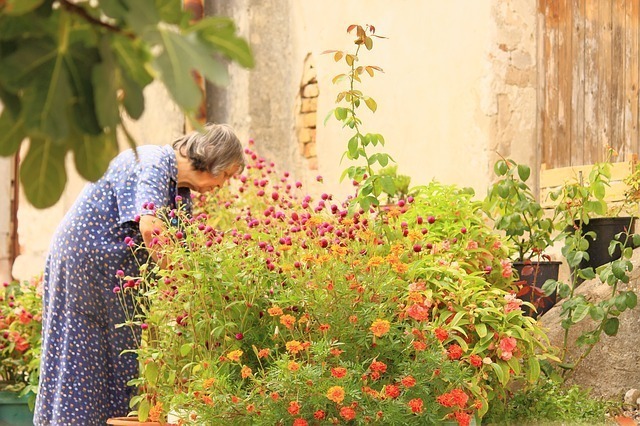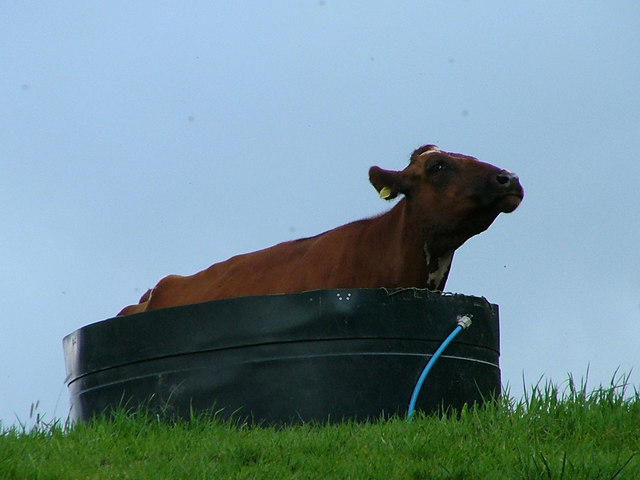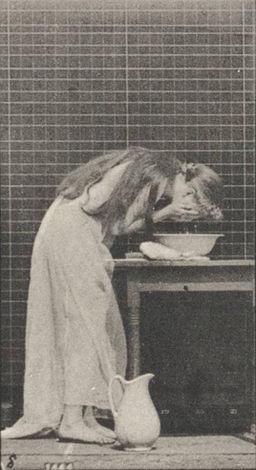What’s the first book you remember reading?

I still remember the day I started reading: I took the book off the nice lady at the kindy mid-read and told her that I could read it myself. The page, as I recall, was a billowy dark grey, a picture of a storm, perhaps. What the book was, alas, I no longer remember.
What about you?
Convolvulus: A Commination
I’ve always liked the idea of being a gardener. I took Horticulture in the fourth form, and Agriculture/Horticulture in the sixth form. I even toyed with the idea of becoming a landscape architect. Gardening is a classic Little Old Lady enthusiasm, and an area in which I have always felt I fell short of true Little Old Lady-hood.
 Because when it comes down to it, I have seldom ever actually gardened, and I think the reason for this lies in my childhood. We moved house frequently, so while there was always gardening to be done, we seldom hung around long enough to see the fruits of our labour. In fact, when I had to grow a garden for school (back in my primary days) I had to grow it at a friend’s house, so as to ensure continued access.
Because when it comes down to it, I have seldom ever actually gardened, and I think the reason for this lies in my childhood. We moved house frequently, so while there was always gardening to be done, we seldom hung around long enough to see the fruits of our labour. In fact, when I had to grow a garden for school (back in my primary days) I had to grow it at a friend’s house, so as to ensure continued access.
The result of all this was that I subconsciously filed gardening under ‘thankless toil’ and never did it unless I had some particular reason to – such as the vegetable garden I grew in the fourth form. My excitement when I saw something I’d planted actually produce knew no bounds. I even dragged my mother out to look at them when she got home. I don’t think she understood why I was so excited about pea plants producing peas, but she duly admired them all the same.
My enthusiasm – particularly as far as weeding was concerned – was rather dented by that same garden, however. While getting down to weed’s eye level to wreak havoc on the little pests, I discovered that weed’s eye view is also really-quite-large-frog’s-eye-view. I don’t know which of us had the worst fright.

So without anything much to motivate me, I seldom gardened; and my occasional bursts of enthusiasm were not enough to make the garden thrive. Such enthusiasm as I had was dampened by the regularity with which the weeds returned and the seeds I’d planted failed to grow. Now, however, being the sole lady of this little demesne, I find that my attitude to gardening is slowly changing.
Instead of the source of unremitting toil which will never render any return, I am beginning to look on the garden as something which is mine to nurture, and which will repay my efforts on its behalf with Good Things – food, and pleasant scents, and leafy sun-dappled shade.
So I have started to garden, little by little. I have dipped my toe into pruning, weeding, planning, repotting, planting – including some seeds which actually sprouted (magic beans from my mother). We’ve even eaten some of the produce of our garden (mint, nasturtiums, redcurrants and lemons). And yet, into this nascent Eden has crept a snake: the accursed Convolvulus, or bindweed.
 The Caped Gooseberry has been waging daily war on it for weeks (my hero!), and yet the evil flourishes. “Have at him, chop him up, turn his roots upward to the sun, don’t let him have a fibre in the shade, if you do he’ll turn himself t’other side up and be as green as a leek in two days,” as Thoreau observed in Walden.
The Caped Gooseberry has been waging daily war on it for weeks (my hero!), and yet the evil flourishes. “Have at him, chop him up, turn his roots upward to the sun, don’t let him have a fibre in the shade, if you do he’ll turn himself t’other side up and be as green as a leek in two days,” as Thoreau observed in Walden.
Convolvulus is like the plant version of the Black Death: even a tiny bit of infection left behind can turn into a full-blown epidemic in a matter of days. If it was edible, we could feed the world with it. As Dave Barry said of crabgrass, “it can grow on bowling balls in airless rooms, and there is no known way to kill it that does not involve nuclear weapons.” And unlike bubonic plague, its victims don’t have a 50% chance of survival. If they aren’t rescued when the Tendrils of Relentless Destruction coil around them, they will be gradually choked to death. It is the Boa Constrictor of the plant world, and it grows a good deal faster.
And so I have been moved to compose this comminatory sonnet, addressed to the vile midnight strangler that creeps about my garden.

I loathe thee to the depth and breadth and height
Thy tendrils reach, and roots spread out of sight
Which all within their choking grasp embrace.
I loathe thee with the effort of each day’s
Repeated work, as my man fights the fight.
I loathe thee, as do all who see aright;
I loathe thee with the fullness of my phrase.
I loathe thy hypocritical false flower,
As with pure white thou seek’st to fool the eye;
I loathe thy strength, thy killing wield of power;
Thy weakness, using others to grow high.
And so my curse, from roots to usurped tower:
To twine about thyself, and, strangling, die.
with a nod to Elizabeth Barrett Browning
and No.43 of the Sonnets from the Portuguese (they aren’t)
The Surprising History of the Bath
The humble bath is so often overlooked. This useful piece of household equipment just sits there, mostly unused, sometimes even downgraded to a mere surface for shower run-off, and yet, the stories it could tell…
A good many people have entered this vale of tears via a bath, since the popularity of water births has increased. One assumes that a warm bath is less of a nasty shock for the new entrant, although presumably they need to be fished out fairly sharpish so they can start breathing in the normal way.
Even more people have departed this vale of tears in the bath. Even overlooking all those who were insufficiently careful with their electrical appliances while bathing.
As it says in Green Eggs and Hamlet,
“To sleep, to dream, now there’s the rub
I could drop a toaster in my tub.”
Winner of the gong for “Most Often Portrayed Dead in His Bath” is Jean-Paul Marat. Marat was assassinated in his tub, which should serve as a warning to all mankind about not giving audiences to young ladies while in the bath, especially when your wife warns you not to!
Agamemnon’s wife is said to have murdered him in the bath, although frankly, after sacrificing their daughter, staying away ten years, and then arriving home with his mistress and their children, he had it coming.
Three of the nine women who believed themselves to be married to George Joseph Smith – under a variety of different names – died in their baths shortly after making wills in his favour. The experienced diver who was helping the pathologist figure out howdunnit had a narrow escape too – it took the pathologist and a doctor half an hour to bring her round.
That’s births and deaths, what about marriages? I thought things probably hadn’t got that far (except perhaps in California) until I saw this. Which, now I look into it, appears to be from California. Where anything can and probably does happen.
The bath is also a great place for thinking. Archimedes figured out the whole water-displacement-volume thing in his tub time, and then invented a scientific method of stealing someone else’s bathwater: the Archimedes’ Screw. Centuries later, the great Agatha Christie dreamt up plots while lying in the bath and munching apples.
I myself am entirely pro-bath. I have lived in bath-having houses for the last twelve years, and while I have nothing against showers, there is nothing so luxuriously comforting as a hot bath when you come home soaked through on a cold rainy day.
This probably seems all the more luxurious to me as bathtubs did not feature largely in my childhood. When I was very little, we lived in a place where clean water was a rare and treasured thing.
We had a little bowl of water to soap up with, and another little bowl to rinse off. Admittedly, I had less surface area back then, but it is actually possible to get clean that way, and it is definitely water-efficient.
Fast-forward a few years and it was bucket showers, with the hot water heated in an enormous black kettle over an open fire. Baths were sometimes had in a large pink plastic bowl, with each member of the family using the bathwater in turn (while Dad read The Lord of the Rings outside the bathroom door). Proper old-school, that was.
I do try to be eco-friendly, which is why I have not made maximal use of the baths available to me for the last decade or so. But I recently realized that two showers take about as much water as one bath. (Seriously, try putting the plug in next time you shower. You will be surprised. Especially if you only have a shower stall…)
And then I made my great discovery. Using the water-displacement theories of that great bather of antiquity, Archimedes, one can enjoy a deeper bath without using more water. How, you ask? Add mass, ideally in the form of one’s dearly beloved. The volume of water thus displaced is experienced as greater depth.
Eureka.





